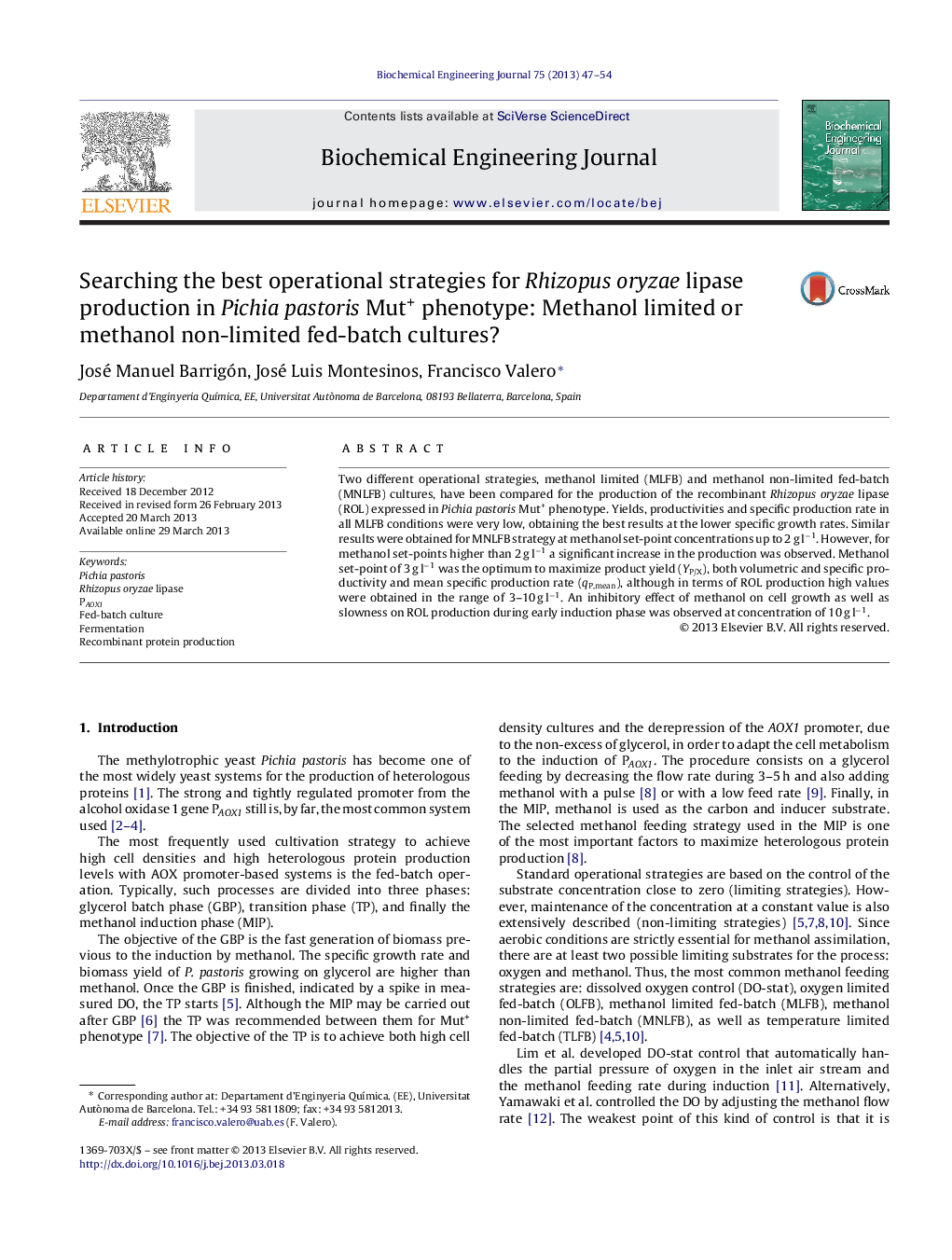| کد مقاله | کد نشریه | سال انتشار | مقاله انگلیسی | نسخه تمام متن |
|---|---|---|---|---|
| 3306 | 163 | 2013 | 8 صفحه PDF | دانلود رایگان |

• Recombinant production of Rhizopus oryzae lipase (ROL) expressed in Pichia pastoris Mut+ phenotype.
• Comparison of methanol limited (MLFB) and methanol non-limited fed-batch (MNLFB) strategies.
• Strategy selection based on yields and productivities.
• Non-limited feeding strategies are the most suitable strategies to improve bioprocess performance.
Two different operational strategies, methanol limited (MLFB) and methanol non-limited fed-batch (MNLFB) cultures, have been compared for the production of the recombinant Rhizopus oryzae lipase (ROL) expressed in Pichia pastoris Mut+ phenotype. Yields, productivities and specific production rate in all MLFB conditions were very low, obtaining the best results at the lower specific growth rates. Similar results were obtained for MNLFB strategy at methanol set-point concentrations up to 2 g l−1. However, for methanol set-points higher than 2 g l−1 a significant increase in the production was observed. Methanol set-point of 3 g l−1 was the optimum to maximize product yield (YP/X), both volumetric and specific productivity and mean specific production rate (qP,mean), although in terms of ROL production high values were obtained in the range of 3–10 g l−1. An inhibitory effect of methanol on cell growth as well as slowness on ROL production during early induction phase was observed at concentration of 10 g l−1.
Journal: Biochemical Engineering Journal - Volume 75, 15 June 2013, Pages 47–54